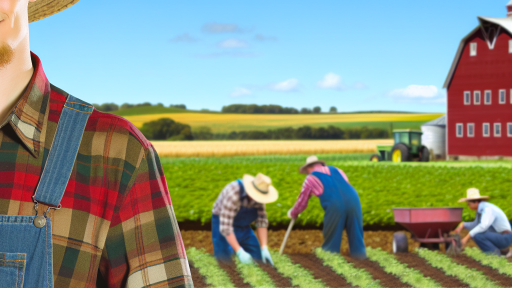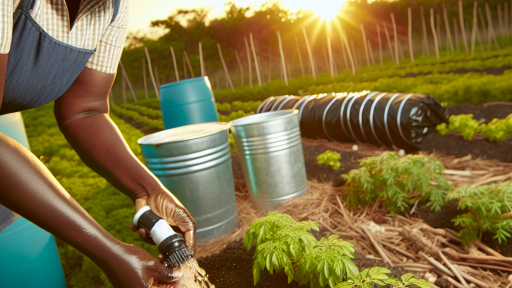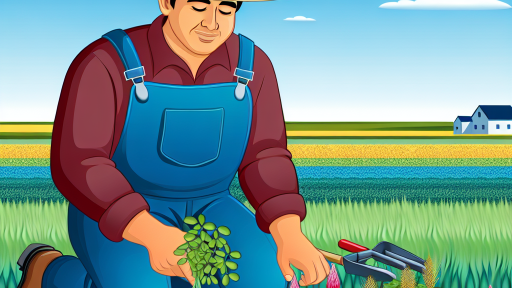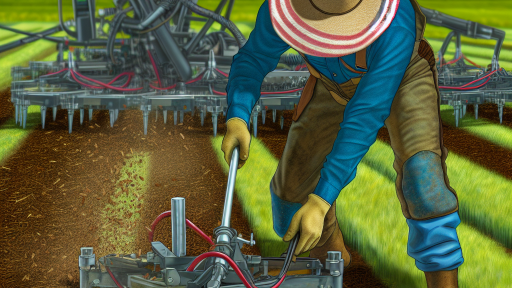Introduction to Seasonal Trends in Pest and Disease Forecasting
Pest and disease forecasting plays a crucial role in agriculture.
Understanding seasonal trends helps farmers make informed decisions.
This proactive approach minimizes crop damage and reduces loss.
Farmers rely on forecasts to prepare for pest invasions and diseases.
Accurate predictions can improve yield and enhance profitability.
The Importance of Seasonal Trends
Seasonal trends reflect changes in environmental conditions.
Weather patterns influence pest populations and disease outbreaks.
For example, increased rainfall can promote fungal diseases.
Conversely, drought conditions may lead to pest migration.
Recognizing these patterns allows timely interventions.
Methods of Forecasting
Various methods exist for forecasting pests and diseases.
Data collection is essential for effective predictions.
Farmers may use historical data, weather information, and crop cycles.
Additionally, new technologies offer advanced modeling capabilities.
These models simulate pest behavior based on climatic changes.
Transform Your Agribusiness
Unlock your farm's potential with expert advice tailored to your needs. Get actionable steps that drive real results.
Get StartedBenefits of Accurate Forecasting
Accurate forecasting provides multiple benefits to farmers.
First, it aids in optimizing pest management strategies.
Second, it allows for better resource allocation.
Farmers can apply pesticides only when necessary.
This approach is cost-effective and environmentally friendly.
Case Studies of Successful Forecasting
Several regions have successfully implemented forecasting systems.
In California, predictive modeling dramatically reduced pesticide use.
Farmers reported healthier crops and improved sustainability.
Another example is the Rice Integrated Pest Management program in Asia.
This program utilizes seasonal forecasts to enhance crop resilience.
Challenges in Forecasting
Despite the advantages, some challenges persist in forecasting.
Data accuracy can vary due to lack of resources.
Additionally, climate change complicates prediction models.
These changes require constant updates to forecasting methods.
Collaboration between scientists and farmers is essential for improvement.
Understanding the Impact of Climate Change on Pest Populations
Shifts in Temperature
Climate change is altering temperature patterns globally.
This shift affects pest life cycles significantly.
Warmer temperatures enable faster reproduction rates.
Consequently, pest populations grow at unprecedented rates.
Changes in Precipitation
Climate change influences rainfall patterns drastically.
Increased rainfall can create favorable conditions for certain pests.
Similarly, drought conditions can stress plants, making them more vulnerable.
As a result, the dynamics of pest infestations change significantly.
Altered Ecosystems
Climate change leads to significant disruptions in ecosystems.
Showcase Your Farming Business
Publish your professional farming services profile on our blog for a one-time fee of $200 and reach a dedicated audience of farmers and agribusiness owners.
Publish Your ProfileThese disruptions create new habitats for pests to thrive.
New host plants and animal species may emerge in altered environments.
Consequently, pest species may establish themselves in new areas.
Increased Pest Resistance
Persistent exposure to changing climate conditions can spur resistance.
Pests that survive environmental stressors often develop adaptations.
This increased resistance complicates pest management strategies.
As a result, pest control efforts may require innovative solutions.
Impacts on Agriculture
Pest population growth due to climate change can threaten crops.
Farmers face increased economic pressures as infestations rise.
This trend can lead to decreased yields and heightened food insecurity.
Moreover, crop damage can disrupt local and global food supply chains.
Looking to the Future
Adapting to these changes is essential for sustainable farming.
Farmers are incorporating climate-smart practices increasingly.
Monitoring pest populations will become more critical than ever.
Furthermore, proactive measures can mitigate pest impacts effectively.
Key Methodologies for Predicting Pest and Disease Outbreaks
Data Collection Techniques
Data collection is vital for accurate pest and disease forecasting.
Farmers increasingly use digital tools for this purpose.
Remote sensing technology provides real-time data from fields.
Weather stations collect essential climate information.
Additionally, citizen science initiatives contribute valuable observations.
Statistical Modeling Approaches
Statistical models help researchers understand pest populations.
These models analyze historical data for trends.
Moreover, they can predict future outbreaks based on conditions.
Common techniques include regression analysis and time-series forecasting.
Such methodologies refine predictions significantly.
Geographic Information Systems
Geographic Information Systems (GIS) visualize pest distribution.
GIS maps reveal correlations between environmental factors and outbreaks.
These insights aid targeted monitoring efforts.
Consequently, farmers can implement timely interventions.
Moreover, GIS enhances collaborative data sharing among stakeholders.
Integrated Pest Management Strategies
Integrated pest management (IPM) combines various strategies.
This approach reduces reliance on chemical pesticides.
IPM utilizes biological controls and cultural practices effectively.
It also incorporates regular monitoring to assess pest threats.
As a result, IPM promotes sustainable agriculture practices.
Machine Learning and Artificial Intelligence
Machine learning algorithms analyze vast datasets efficiently.
These technologies improve prediction accuracy over time.
They recognize patterns in environmental variables and pest behavior.
Moreover, AI can optimize resource allocation during outbreaks.
Ultimately, these innovations enhance decision-making processes.
Showcase Your Farming Business
Publish your professional farming services profile on our blog for a one-time fee of $200 and reach a dedicated audience of farmers and agribusiness owners.
Publish Your ProfileCommunity Engagement and Education
Engaging the community is crucial for pest and disease management.
Farmers benefit from educational programs on best practices.
Workshops encourage knowledge sharing among local growers.
Furthermore, involving schools promotes awareness about pest control.
This collaborative effort strengthens community resilience against outbreaks.
Explore Further: Integrating Nutrient Management on Your Farm
Role of Technology in Enhancing Forecasting Accuracy
Introduction to Forecasting Technologies
Forecasting pests and diseases relies heavily on technology.
Modern tools improve the accuracy of predictions significantly.
These advancements help in identifying seasonal trends effectively.
Data Collection and Analysis
Data collection plays a crucial role in forecasting accuracy.
Sensors and IoT devices gather real-time environmental data.
Advanced analytics process this data efficiently.
Machine learning algorithms analyze trends and patterns.
This process enables accurate predictions and timely interventions.
Remote Sensing Technologies
Remote sensing is vital for monitoring large agricultural areas.
Satellite imagery provides insights into crop health and conditions.
This technology helps identify pest outbreaks from above.
Consequently, farmers receive early warnings of potential threats.
Mobile Applications
Mobile applications empower farmers with essential information.
These apps deliver localized data on pest activity and disease forecasts.
Farmers can access tips for effective pest management instantly.
Additionally, real-time alerts help them take preventive action.
Integrated Pest Management Systems
Integrated pest management (IPM) systems combine multiple techniques.
These systems use technology to optimize pest control methods.
This approach minimizes chemical usage and environmental impact.
Furthermore, it enhances crop yield and sustainability.
Collaboration and Data Sharing
Collaboration among stakeholders enhances forecasting accuracy.
Farmers, agronomists, and researchers share valuable data.
These partnerships lead to better understanding of pest cycles.
Subsequently, the collective knowledge improves overall predictions.
Continuous Improvement through Feedback
Feedback loops are essential for refining forecasting models.
Through continuous monitoring, models adapt to changing conditions.
This process ensures that predictions remain relevant and accurate.
Ultimately, technology-driven forecasts lead to effective pest management strategies.
Learn More: Cover Cropping Techniques for Organic Farming
Seasonal Patterns of Common Agricultural Pests and Diseases
Introduction to Seasonal Trends
Understanding seasonal trends is crucial for effective agriculture.
Pests and diseases vary significantly with changing seasons.
This variation influences crop yields and farming strategies.
Spring Dynamics
Spring marks the beginning of the active growing season.
Many pests emerge from winter dormancy during this time.
Showcase Your Farming Business
Publish your professional farming services profile on our blog for a one-time fee of $200 and reach a dedicated audience of farmers and agribusiness owners.
Publish Your ProfileFor example, aphids frequently appear as temperatures rise.
Fungal diseases also increase due to higher moisture levels.
Farmers must monitor crops closely during this period.
Summer Challenges
Summer typically brings the peak of pest populations.
Conditions such as heat and humidity promote disease spread.
Pests like caterpillars can devastate crops quickly.
Effective pest management becomes essential during this season.
Integrated Pest Management (IPM) strategies can minimize damage.
Autumn Considerations
As temperatures begin to cool, pest activity starts to decline.
However, pathogens can still pose threats to late-season crops.
For instance, late blight may affect crops like tomatoes.
Farmers should remain vigilant despite the decreasing pest numbers.
Harvest practices also impact the introduction of pests into storage.
Winter Preparations
Winter usually brings a reprieve from many pests and diseases.
Nonetheless, some pests enter a dormant state and can re-emerge.
Farmers can prepare by implementing fall sanitation practices.
Removing debris reduces pest habitats temporally.
Understanding these seasonal cycles allows for better crop management.
Year-Round Monitoring
Implementing a year-round monitoring system is beneficial.
Regular assessments can identify emerging threats early.
Utilizing technology for monitoring aids timely decision-making.
Forecasting tools can further enhance pest management efforts.
Ultimately, being proactive leads to healthier crops and improved yields.
Discover More: Natural Pest Control Methods for Organic Crops
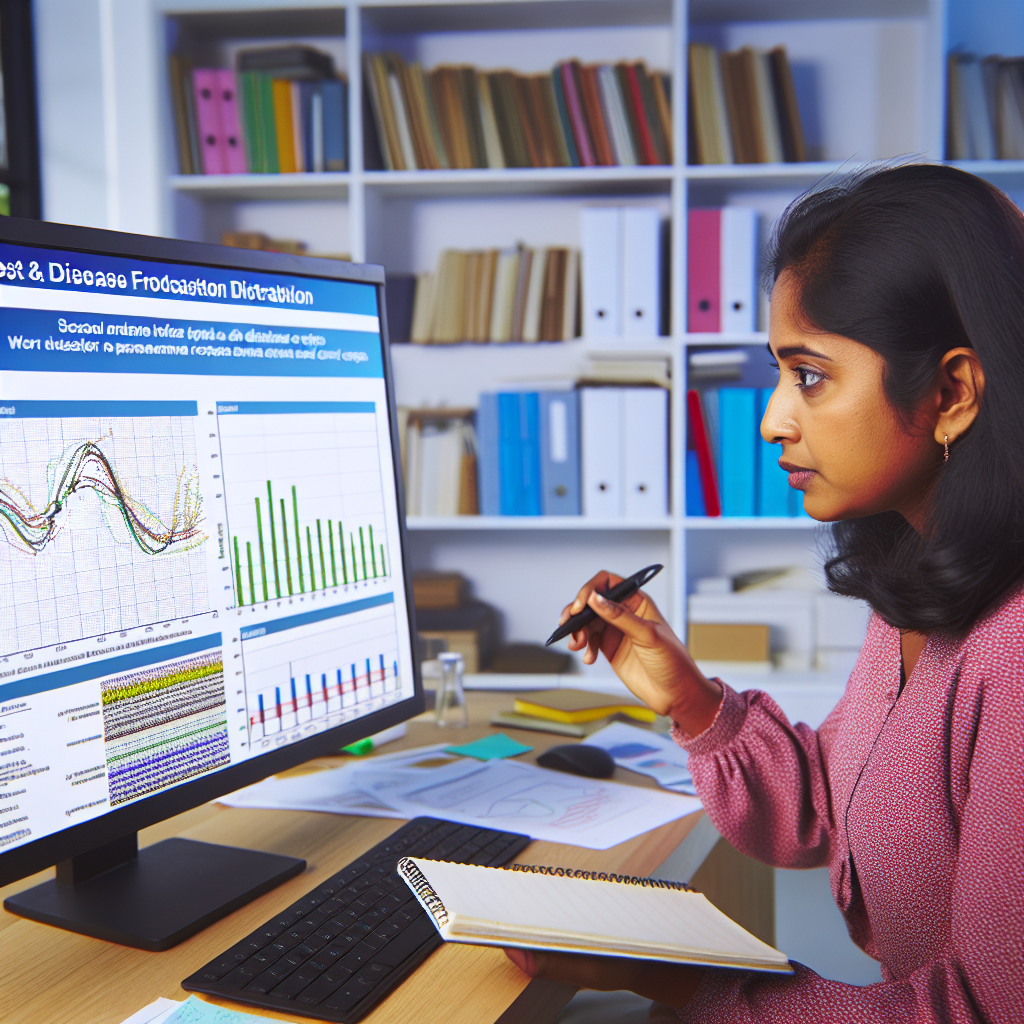
Case Studies: Successful Forecasting and Management Strategies
Case Study: A Successful Forecast in Crop Management
A notable example comes from AgriTech Solutions.
This company implemented advanced modeling for pest forecasting.
They exhibited remarkable success in predicting locust outbreaks.
Using satellite imagery and climate data contributed significantly to their analysis.
Farmers reported up to 30% less pesticide use through their strategies.
Impact of Seasonal Trends on Disease Control
Consider the case of GreenGrow Farms, a cooperative in Florida.
They employed seasonal forecasting techniques to manage tomato blight.
Predictive analytics tools assessed humidity and temperature levels.
This enabled timely interventions, reducing disease incidence by 40%.
Farmers were able to avoid significant crop losses with this approach.
Utilizing Technology for Pest Detection
TechHarvest Innovations offers a different perspective.
Their smartphone app aids farmers in real-time pest identification.
Farmers input data about crop conditions and receive alerts instantly.
This encourages proactive management rather than reactive methods.
As a result, farmers using the app reported a 25% increase in yields.
Integrating Community Efforts for Effective Management
The Maplewood Agricultural Group demonstrates the power of collaboration.
Showcase Your Farming Business
Publish your professional farming services profile on our blog for a one-time fee of $200 and reach a dedicated audience of farmers and agribusiness owners.
Publish Your ProfileThey organized community workshops focusing on pest forecasting.
Farmers shared insights and best practices, improving overall results.
By collaborating, they reduced the need for chemical treatments significantly.
This approach built a sustainable farming community.
Lessons Learned from Successful Forecasting
These case studies underscore important lessons in pest and disease management.
First, accurate forecasting combined with technology leads to better outcomes.
Second, community engagement amplifies knowledge sharing and support.
Finally, proactive strategies prove more effective than reactive measures.
Delve into the Subject: Companion Planting Tips for Organic Crop Success
Implications of Seasonal Forecasting for Sustainable Farming Practices
Enhancing Crop Management
Seasonal forecasting allows farmers to improve crop management strategies.
This practice helps in anticipating pest outbreaks and disease spread.
Farmers can apply targeted interventions to mitigate risks effectively.
For instance, timely planting can prevent losses from early pest invasions.
Resource Optimization
Accurate forecasting optimizes resource allocation on farms.
Farmers can adjust water and fertilizer usage based on seasonal predictions.
This leads to reduced waste and improved cost efficiency.
Moreover, it encourages environmentally friendly practices.
Supporting Biodiversity
Seasonal trends can guide farmers in promoting biodiversity.
Diverse cropping systems attract beneficial insects and predators.
Additionally, they can help maintain soil health and ecosystem stability.
This holistic approach fosters a more resilient farming environment.
Informed Decision Making
Seasonal pest and disease forecasts support informed decision making.
Farmers can base their actions on reliable, data-driven insights.
This proactive stance reduces dependence on chemical treatments.
Ultimately, it leads to more sustainable farming approaches.
Community Collaboration
Seasonal forecasting encourages collaboration among farming communities.
Farmers can share insights and strategies to combat shared challenges.
Pooling resources enhances the effectiveness of pest control measures.
Coordination fosters a collective effort towards sustainability.
Long-term Viability
Implementing these practices contributes to long-term farm viability.
Farmers can adapt to changing climate conditions through forecasting.
This adaptability ensures continued productivity and economic stability.
Consequently, it lays the foundation for future agricultural success.
Future Trends: Integrating AI and Machine Learning in Pest Forecasting Systems
The Role of AI in Pest Detection
AI can process vast amounts of data quickly and accurately.
It helps identify pest patterns based on historical data.
Furthermore, AI algorithms improve their predictions with each new input.
Machine Learning for Enhanced Accuracy
Machine learning enhances pest forecasting systems by learning from previous data.
These systems can adapt to new threats as they emerge.
As a result, they offer timely warnings to farmers and agricultural professionals.
Data Sources for AI and Machine Learning
Integrating various data sources enhances the robustness of pest forecasting.
Showcase Your Farming Business
Publish your professional farming services profile on our blog for a one-time fee of $200 and reach a dedicated audience of farmers and agribusiness owners.
Publish Your Profile- Weather data provides critical insights into pest behavior.
- Satellite imagery helps track crop conditions and infestations.
- Soil health metrics contribute to understanding pest prevalence.
Predictive Analytics in Pest Management
Predictive analytics allow for proactive pest control strategies.
Farmers can implement measures before infestations become widespread.
This approach minimizes crop damage and loss.
Challenges and Opportunities
Integrating AI into existing systems presents challenges.
Data quality and availability remain significant concerns.
Despite this, the opportunities for improved pest management are vast.
Investments in technology can lead to sustainable agricultural practices.
Additional Resources
Climate Change Impacts on Agriculture and Food Supply | US EPA

